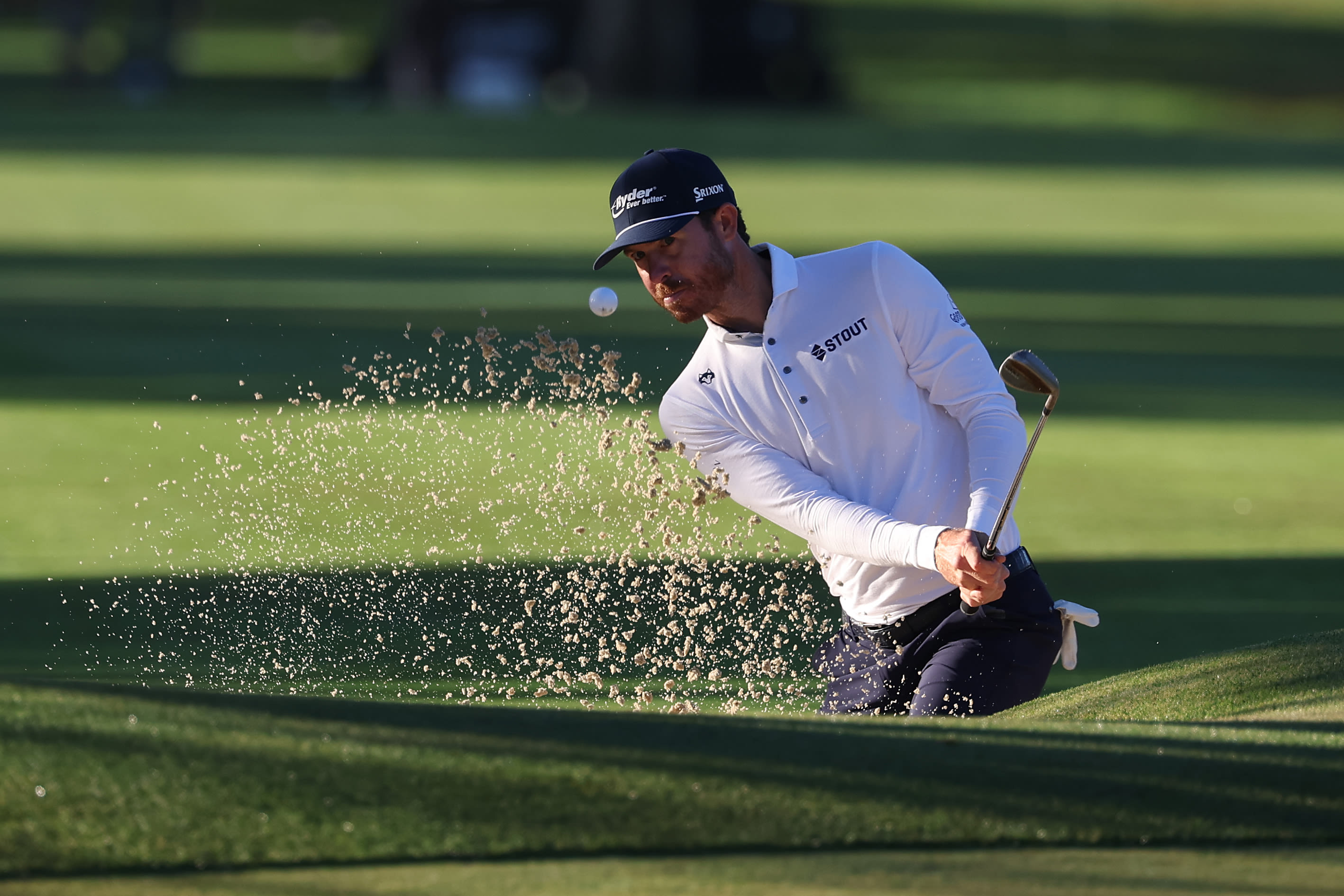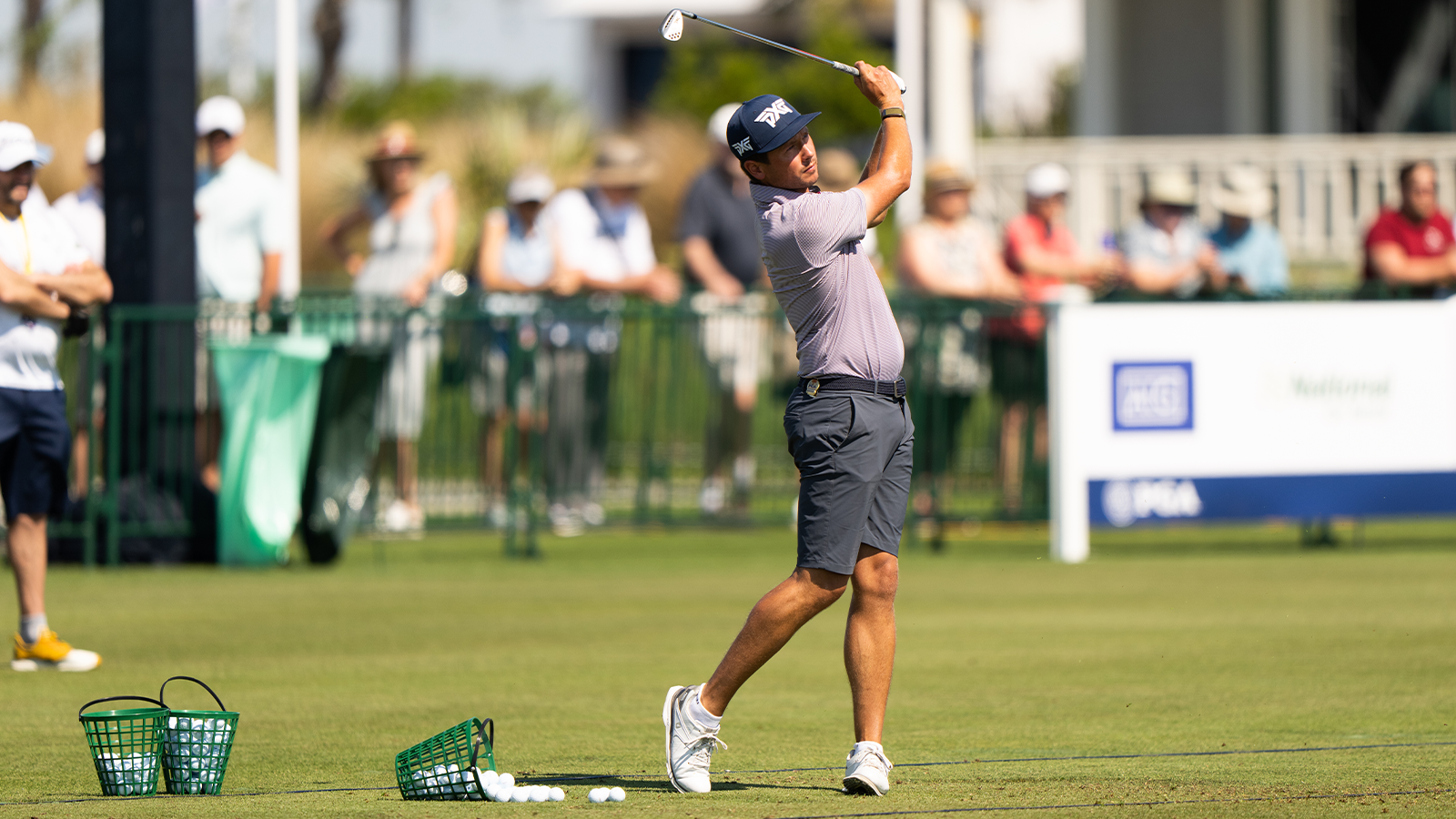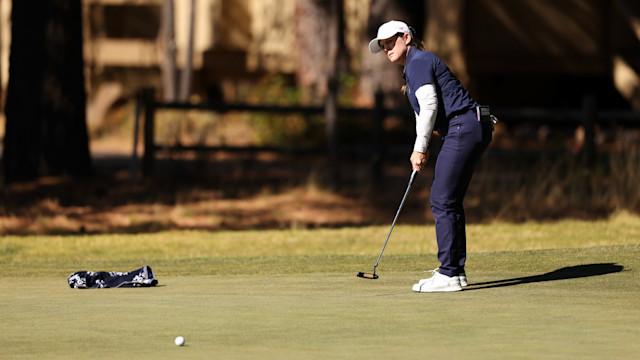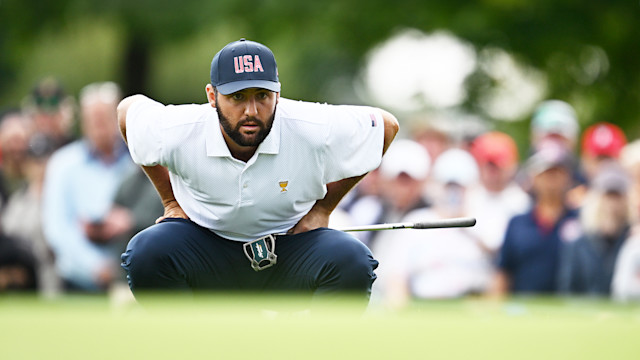quick coaching
How to Get Out of a Golf Slump
By Brendon Elliott, PGA
Published on

Sam Ryder is finding his groove at the Black Desert Championship.
As someone who has spent over three decades in the golf industry as a PGA Coach, I've seen it all — the highs, the lows, and the in-betweens that often go unmentioned but are every bit as crucial.
If there's a golfer who's recently personified this resilience, it's Sam Ryder. After missing four consecutive cuts on the PGA TOUR, he shot a bogey-free, seven-under-par 64 on Thursday at the inaugural Black Desert Championship, followed up with a five-under-par 66 on Friday, and sits in prime position this weekend.
Let's break down how you, too, can turn around a slump in your game and get back to making those high notes sing. In many cases, it starts with mindset and a return to fundamentals . . . lets dig in.
Understanding the Rollercoaster

Sam Ryder.
No matter your skill level, you will experience ups and downs. Ryder has maintained his PGA TOUR card for seven years — a feat not accomplished by many. However, even seasoned professionals like him face inevitable slumps. Understanding that these setbacks are part of the journey helps keep the mind focused on improvement. Knowing this in your gut will allow you to muster the patience and determination required to fight your way back to success.
Recognize the Signs of a Slump
Before you can turn things around, you have to know you're in a slump. Inconsistent ball striking, unpredictable putting and a general lack of confidence can all be signs. It's crucial you pinpoint where things are going off the rails. Sometimes, a fresh set of eyes, like those of a PGA of America Golf Professional, can help you see what you don't.
Find a Coach
Take the next step in your golf journey by connecting with a PGA Coach in your area.
Mental Reset
A comeback often starts in your head. Close your eyes and imagine the perfect drive, the ball sailing through the air and landing softly on the fairway. Another helpful method is mindfulness or meditation; spend a few minutes each day calming your mind. Doing so will help clear out distractions that can mislead your swing or cause you to choose the wrong club under pressure.
Technical Adjustment

A slump sometimes requires a technical fix. During sessions with your coach, consider revisiting the fundamentals: grip, setup, alignment and posture. Too often, golfers stray from these basics. In Ryder's case, a focus on precision and maintaining those technical aspects could have contributed significantly to his impressive Thursday round.
Routine is Key
Consistency is often born from a solid routine. Create a pre-shot routine that you perform religiously. Whether it's a deep breath, a wiggle of the club, or even a small mental cue, having something to ground you before each shot can significantly improve focus and provide a reliable rhythm.
Drill: The Bounce-Back Drill
One step-by-step drill I recommend is what I like to call the "Bounce-Back Drill." It's practical and emphasizes rhythm, tempo and targeting.
Step 1: Warm Up
Start by hitting ten relaxed wedge shots, aiming for a consistent distance. Don't worry about where the ball lands; this is simply to warm up and find a rhythm.
Step 2: Target Practice
Pick a specific target approximately 150 yards away. Using a mid-iron, hit ten balls toward the target, noting the flight and landing of each shot. Adjust for any immediate misalignments observed.

PGA Professional Ben Polland hits his shot on the driving range during a practice round for the 2021 PGA Championship held at the Ocean Course on May 17, 2021 in Kiawah Island, South Carolina. (Photo by Darren Carroll/PGA of America)
Step 3: Tempo and Balance
Switch to your driver and focus solely on tempo and balance. Hit five drives and aim for consistent contact over distance. The point here is to recognize where your natural rhythm lies.
Step 4: Simulated Pressure
Finally, end on five pressure shots. Simulate a 'final hole' experience in your mind. Incorporate your full routine — visualize, deep breath, swing — and execute.
Most importantly, learn to give yourself time. Ryder's resurgence didn't happen in a day, and your comeback won't either. Be patient and compassionate with yourself. Celebrate small gains and, remember, the culmination of these moments will get you out of your slump.
Your comeback is just a swing away!



